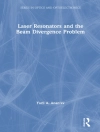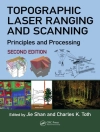The quality of a telecommunication voice service is largely inftuenced by the quality of the transmission system. Nevertheless, the analysis, synthesis and prediction of quality should take into account its multidimensional aspects. Quality can be regarded as a point where the perceived characteristics and the desired or expected ones meet. A schematic is presented which classifies different entities which contribute to the quality of a service, taking into account conversational, user as we Il as service related contributions. Starting from this concept, perceptively relevant constituents of speech communication quality are identified. The perceptive factors result from ele- ments of the transmission configuration. A simulation model is developed and implemented which allows the most relevant parameters of traditional trans- mission configurations to be manipulated, in real time and for the conversation situation. Inputs into the simulation are instrumentally measurable quality elements commonly used in transmission planning of telephone networks. A reduced set of these quality elements forms a basis for models which aim at predicting mouth-to-ear quality as it would be perceived by a user of the sys- tem. These models are an important tool for the planner of telecommunication networks, as they allow the expected quality to be estimated in advance, even before the network has been set up. Two well-known models (the SUBMOD and the E-model) are analyzed in more detail, with an emphasis on the psy- choacoustic and psychophysical backgrounds.
Sebastian Moller
Assessment and Prediction of Speech Quality in Telecommunications [PDF ebook]
Assessment and Prediction of Speech Quality in Telecommunications [PDF ebook]
Compre este e-book e ganhe mais 1 GRÁTIS!
Língua Inglês ● Formato PDF ● ISBN 9781475731170 ● Editora Springer US ● Publicado 2012 ● Carregável 3 vezes ● Moeda EUR ● ID 4673433 ● Proteção contra cópia Adobe DRM
Requer um leitor de ebook capaz de DRM












